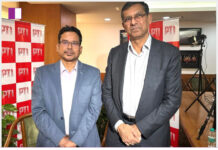Chandrahas Shetty, Demand Facilitation Lead, India, Magnite, shares three guiding principles for media buyers to help them future-proof their media-buying
Increased smart device penetration, expanding internet access, and infrastructure investment are all fueling the explosive growth of digital media in India. Households in India with Connected TVs reached 25 million last year, a figure expected to nearly double by 2025.
Media consumption is increasingly omnichannel, with Indian audiences viewing content across platforms and devices. The digital media market in India surpassed $8.2 billion USD this year, growing from $6.9 billion in 2022.
Despite rapid growth, ad buying has become heavily fractured and complex. To complicate matters, conventional audience targeting has been upended by the decline of third-party cookies and more stringent privacy practices. This makes addressability another variable that buyers must navigate in an already shifting landscape.
To meet these challenges advertisers need to streamline media buying so it’s addressable, measurable, and transparent across channels, with controls and flexibility in place to meet campaign goals. As we navigate this evolving landscape together, here are three guiding principles for buyers to help them future-proof their media-buying – and take full advantage of explosive digital media consumption in India.
1. Streamline ad buying with programmatic pipes
Programmatic pipes provide brands with a more streamlined ad-buying process that, when combined with a centralised access point for inventory across channels, allows marketers to drive efficient and effective campaign performance. Programmatic also empowers brands to target audiences more effectively on a larger scale as media owners and their supply partners increasingly make it easier to execute programmatic campaigns against contextual and first-party data. Benchmarking against campaign outcomes then informs smarter buying decisions and optimization that programmatic buying allows.
Programmatic buying affords buyers greater flexibility and control over audience targeting, budgets, and choice of media. With many of the tasks involved in programmatic being more automated, it also creates unmatched speed and efficiency in terms of campaign setup and optimization. Buyers can also tailor their spend to include open auctions, curated auction packages, private marketplace deals (PMPs), preferred deals or programmatic guaranteed.
Buyers in India are already taking note of programmatic’s benefits. As The State of Programmatic in JAPAC 2022 report indicates, there’s been a surge in programmatic investment in the Japan and Asia-Pacific (JAPAC) region, with 90% of Indian survey participants reporting a rise in programmatic spending, while a mere 4% suggested a decline.
2. Forge more direct relationships with publishers (and audiences)
In an omnichannel landscape, Supply-Path-Optimisation (SPO) can be used to streamline sell-side partners to focus solely on those that deliver access to premium inventory across channels, at scale. Buyers should look to work more strategically with sell-side partners that provide the tools to better plan, buy, measure, and optimize in an omnichannel media ecosystem. For instance, actionable insights for more informed planning and campaign optimization, as well as audience curation, and improved contextual intelligence are increasingly originating on the sell side.
As addressability, targeting, and audience layering move to the supply side, it will be increasingly important for the exchange to act as a partner in presenting the value of an ad to the buyer, so they can make an informed bid.
3. Seek ways to maximise audience addressability
Advertisers drive greater advertising impact when ads are relevant. However, recent privacy regulations and the decline of third-party cookies have forced brands to lean harder on their own data. As a result, buyers need to adopt a portfolio approach to identity in order to continue engaging the right audiences. This includes leveraging owned first-party data – such as CRM data – through universal ID solutions or data matching, as well as utilizing contextual targeting, cohort-based solutions, or publishers’ first-party segments.
In particular, the capacity to accurately convey data in a secure way that minimizes the risk of data exposure has become crucial. For example, data-matching solutions allow buyers and sellers to build out a scaled, secure method of matching data for insights and activation.
Ultimately, to keep pace with India’s changing consumption habits and high demand for streaming content, the way advertisers buy and plan media is changing. Fragmentation across devices, channels, and walled gardens continues to pose a challenge. Yet, explosive growth presents a golden opportunity for brands looking to reach new and existing audiences across touchpoints. By embracing the flexibility and efficiency of programmatic, forging more direct relationships with sell-side partners, and maximizing audience data, brands can future-proof their media-buying strategy for continued growth.






































